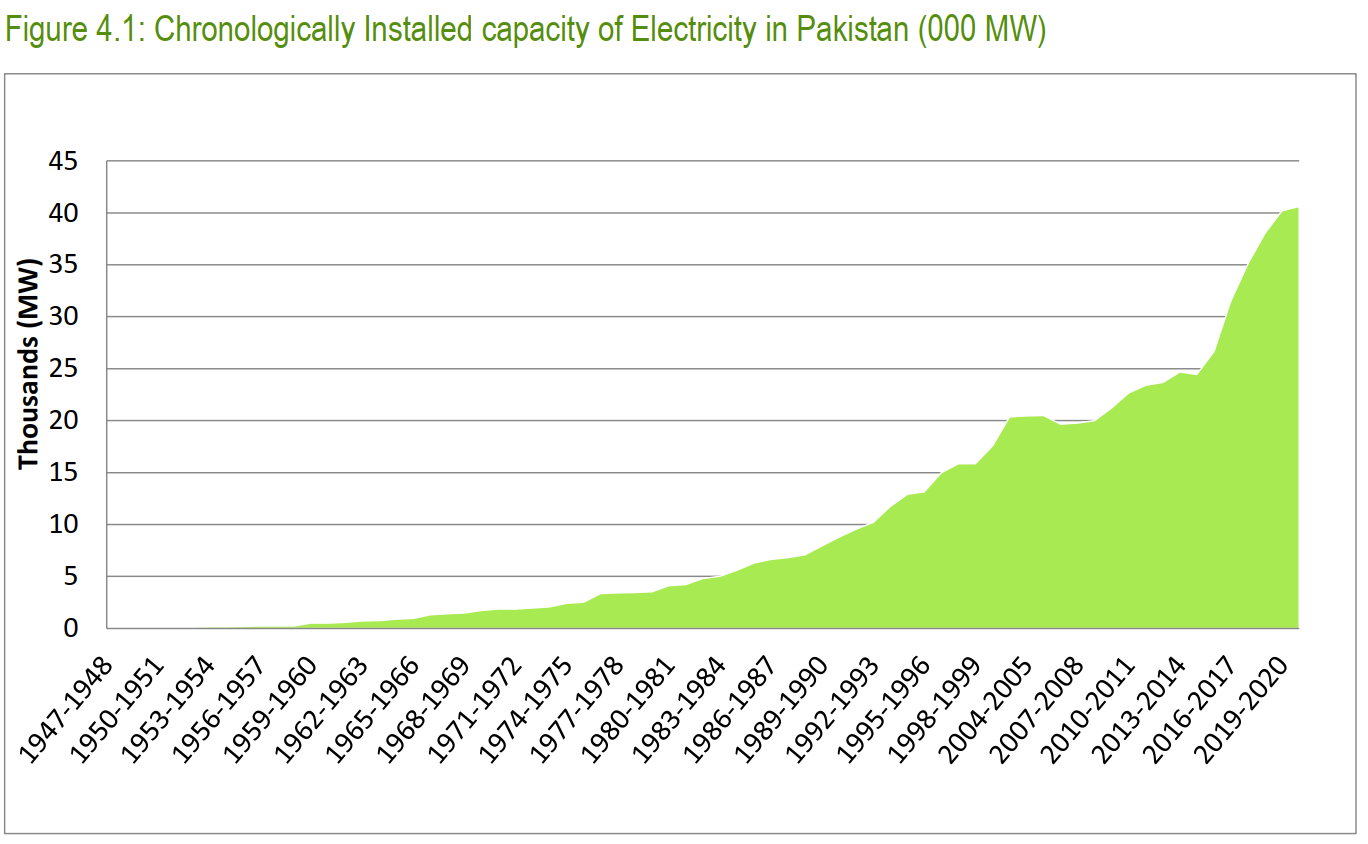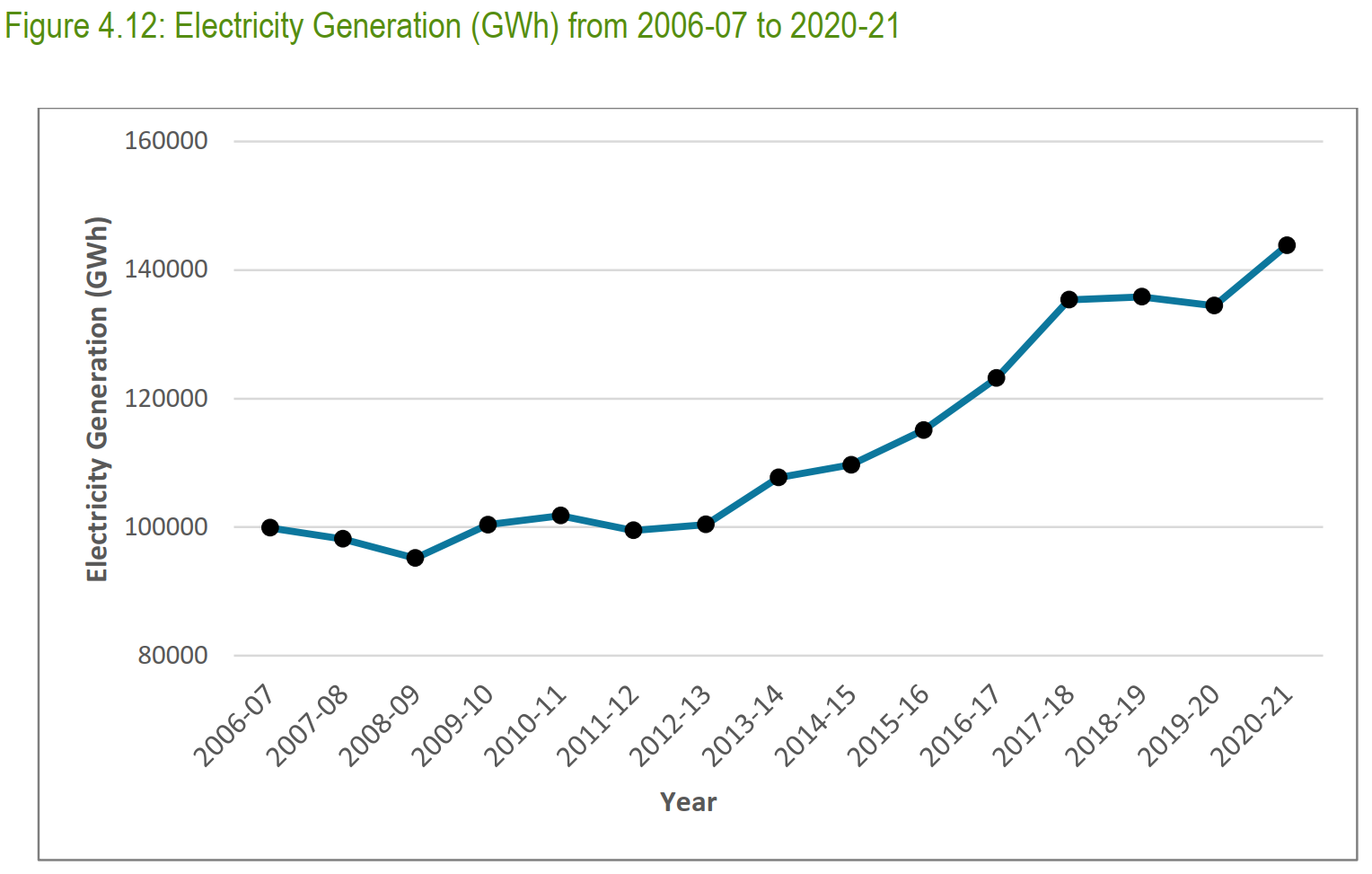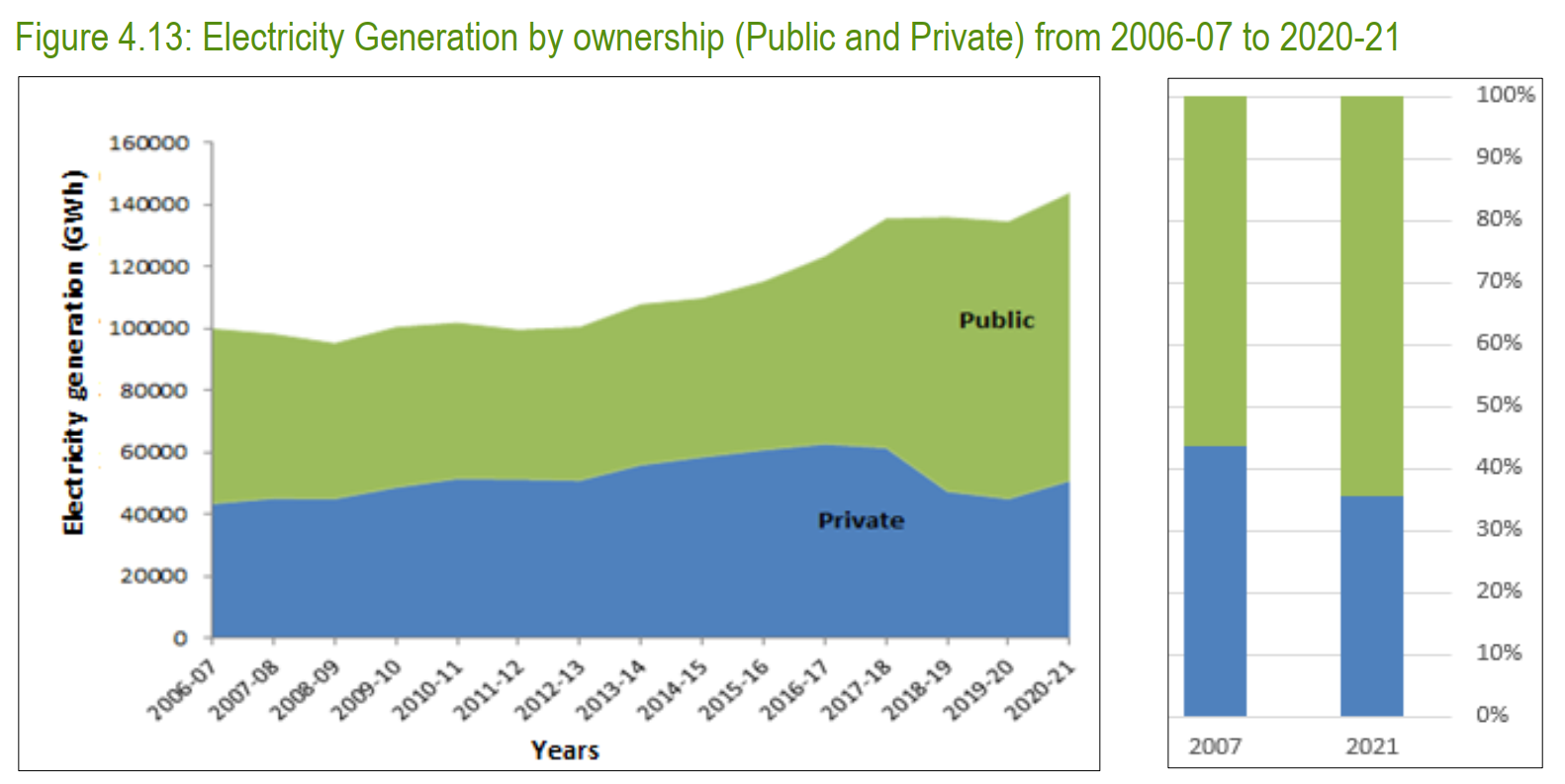INP-WealthPk
Muhammad Mudassar
The average capacity utilization rate of nuclear energy during the FY2020-21 was very high, standing at 72% followed by hydel (45%), thermal (38%), wind (27%), solar (19%), and bagasse (15%), according to the Pakistan Bureau of Statistics (PBS), reports WealthPK.
Pakistan has a prodigious potential for nuclear energy and plans to generate 8,800MWs by the end of 2030 and 40,000MW by 2050 with a total of 32 nuclear power plants to meet one-fourth of its energy needs. This will enable the country to switch to zero-emission clean energy.
The Pakistan Atomic Energy Commission (PAEC) has connected 1,100MW Karachi Nuclear Power Plant Unit-3 (K-3) to the national grid on a trial basis. The unit’s power generation capacity would be enhanced gradually. K-3 is the second nuclear power plant (NPP) in Pakistan with a generation capacity of 1,100 megawatt.
The overall installed capacity has increased by 79 percent during the last decade from 2,2674MW in 2011 to 40,606MW in 2021. The major contributor to this massive electricity capacity is China-Pakistan Economic Corridor (CPEC).

Besides this, the installed capacity by type of source has also been computed where the maximum installed capacity is thermal with a share of 66% for the year 2020-21. Other sources, hydel, nuclear, wind, bagasse, and solar have 25%, 4%, 3%, 1%, and 1% shares respectively. Among the provinces, Punjab has a maximum installed capacity of 17,257MW, while Sindh has the second highest installed capacity of 11,345MW followed by KP (5951MW), Balochistan (3722MW), and AJK (2331MW).

The overall electricity generation has surged by 41 percent during the last decade. The electricity generation reached 14,3847GWh in 2021 from 10,1773GWh in 2011. The Annual Average Growth Rate (AAGR) is about 2.7% during the period 2006-07-2020-21. The maximum increase of 10% is observed in 2017-18 over 2016-17. The electricity generation for the year 2020-21 has shown an increase of 6.9% over the previous year.

There is a big jump in electricity generating capacity after 2016 in respect of the public sector. The private sector shows 6.7% AAGR from 2006-07 to 2020-21 whereas the public sector portrays only 4.9% during the same period of time.
As Pakistan generates nuclear power and applies nuclear technology for peaceful purposes, it is contributing to the advancement of the Sustainable Development Goals of the United Nations. The benefits of nuclear technology are diverse and can be found across many fields, including medicine, health, agriculture, industry, water resource management, and power generation.
Independent News Pakistan-Wealthpk




